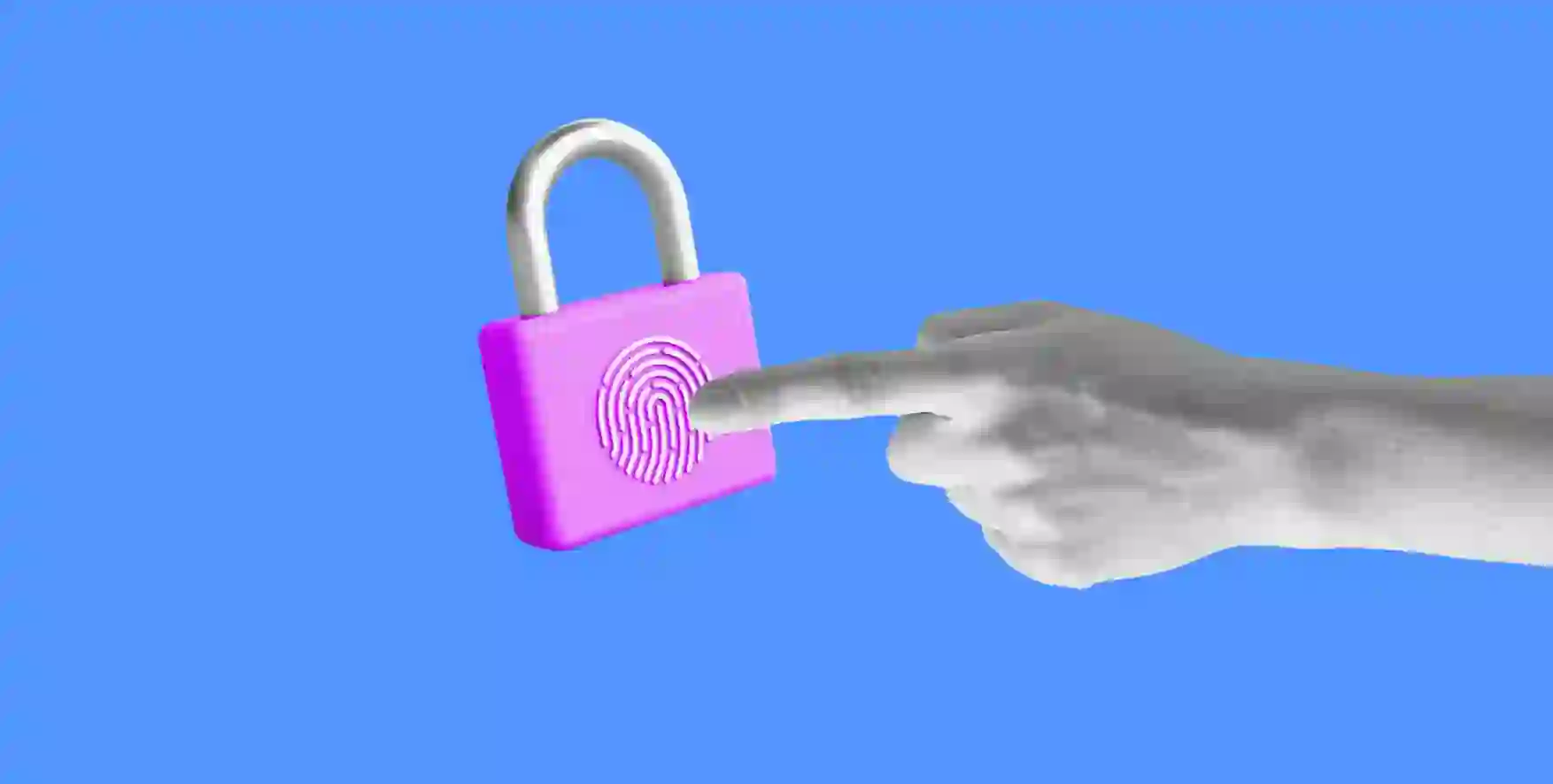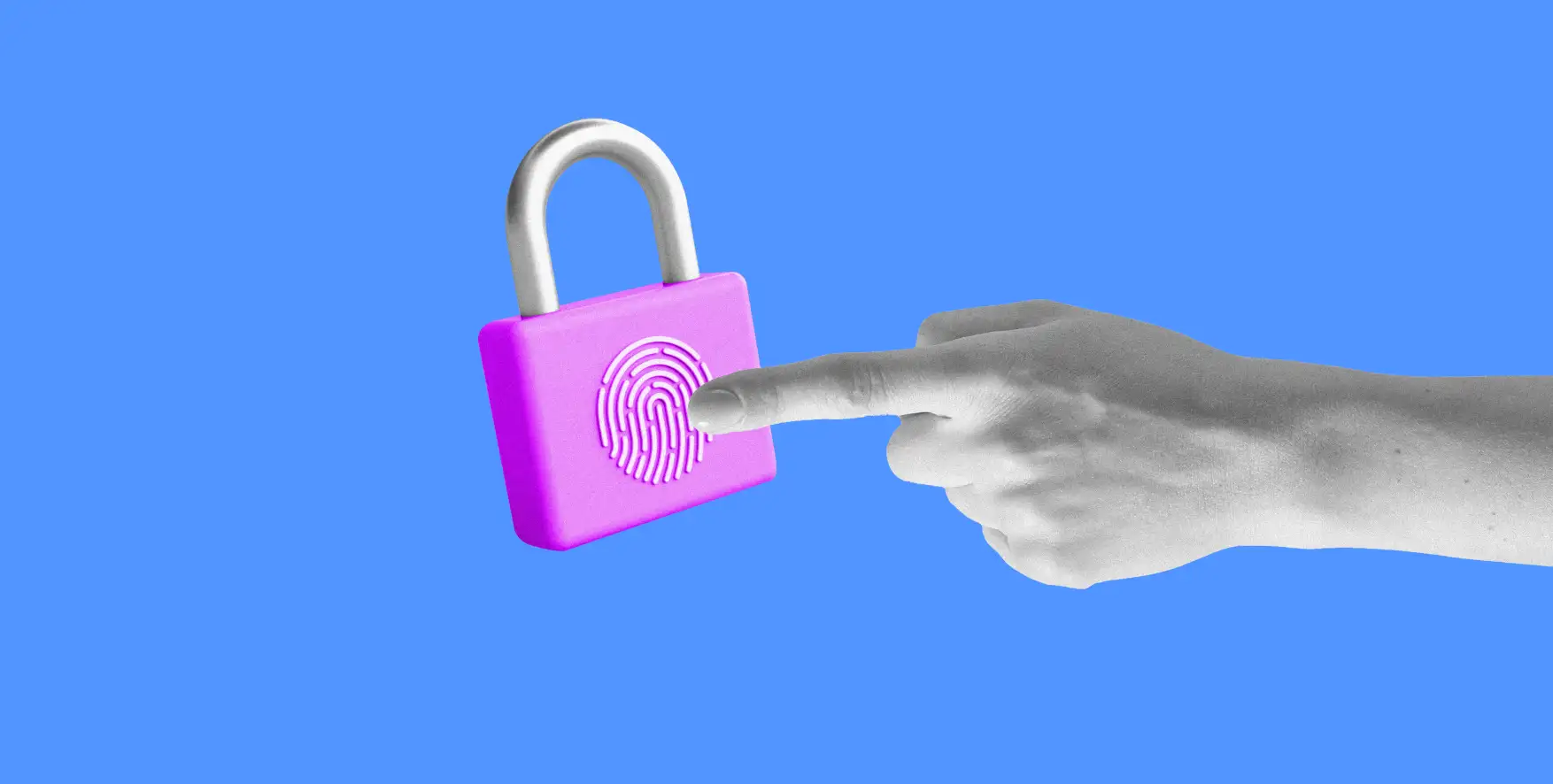Biometrics technology is taking customer experience and identity verification to a new era. Different biometric technologies are widely used in businesses today to help verify users for the purpose of both fraud detection and KYC.
Biometric verification has numerous uses in the digital world, but the banking industry is where it shines. Banks increasingly use biometrics to facilitate secure, fast account transactions and openings. Here, biometrics is replacing knowledge-based authentication, two-factor authentication, passcodes, and passwords. Biometrics has revolutionized the user experience in banking by bringing an additional but convenient security dimension. Biometrics identification is effective because it measures an individual’s unique characteristics.
This article outlines everything you need to know about the use of biometrics technology in banking, including how it works, its use cases, the risks involved, and how to mitigate them.
What is biometrics in banking?
Biometric banking is the practice of using unique behavioral characteristics of individuals for security and authentication purposes in account access and digital banking transactions. These characteristics typically include voice recognition, facial recognition, retina recognition, or fingerprint scans.
Biometric authentication is fast becoming an essential component of IT for banks because of its ability to offer unrivaled and highly secure identification processes. In addition, biometrics also have immense applications in online banking, mobile banking, ATMs, and in-branch banking.
How does biometrics in banking work?
Biometrics in banking captures unique physiological or behavioral characteristics during an initial customer onboarding process, such as fingerprints, facial features, voice patterns, iris scans, or palm veins.
The captured data is then transformed into digital templates, securely stored in a database, and serves as a reference for subsequent identity verifications. When customers access banking services or conduct transactions, they provide a fresh biometric sample, which the system compares to the stored template using advanced algorithms.
Successful matches authenticate the individual, allowing them to proceed with the desired banking activity.
INTEGRATE BIOMETRIC TECHNOLOGY IN YOUR BUSINESS
Rely on EPAM Startups & SMBs to deliver biometric-based features end to end.
Primary biometric modalities in banking
As we have already established, biometric authentication in banking relies on various behavioral or physical characteristics to establish identity. Here are some of the main types of biometric modalities used in financial software development:
Fingerprint recognition
This is the most widely recognized biometric type. Fingerprints present a unique opportunity for high accuracy and reliability. Each person has a unique fingerprint pattern to be captured and compared for authentication.
Finger or palm veins
Also known as vascular biometrics, finger or palm veins capture the vein patterns in a person's fingers or palms and compare them to a stored database of vein patterns. These patterns are as unique to you as your fingerprint, and given that they are subdermal (under the skin), they are considered highly secure in comparison.
Facial recognition (with liveness detection)
This modality analyzes facial patterns and features for verification. Facial recognition banking systems use algorithms to compare the captured image with stored templates to grant or deny access. Liveness detection ensures that the facial features captured are from a live person, not a photograph or video.
Voice recognition
To verify identity, voice recognition biometrics analyze vocal characteristics like speech patterns, tone, and pitch. Voice recognition systems can capture and analyze an individual’s unique voice prints for authentication.
Iris scan
Iris scanning works by examining the intricate patterns in the iris, thus providing a highly accurate identification method. Iris recognition systems use near-infrared light when capturing detailed images of the iris, which are then compared with images from the database for authentication.
Why do banks need biometrics?
The rise of advanced transactional technologies to fight fraud makes conventional security measures inadequate. As such, incorporating biometric technology into the banking security system is necessary to protect against security threats like data breaches.
That said, although digital banking has numerous advantages for customers and banks, it also brings a significant security challenge. The main weakness stems from the obligation to foster trust by verifying the identity of individuals who wish to access online banking services, which criminals can take advantage of.
The bank’s efforts to make digital services more user-friendly and accessible naturally create avenues for fraudsters to explore. Adopting biometrics aligns with the banking industry’s goal of providing customers with user-friendly, convenient, and secure banking services.
Why banks need biometrics
Having biometrics is not just about security but a move toward the future and may sometimes be required by law. Some of the core reasons banks use biometrics include:
Comply with regulatory requirements
Regulatory requirements such as the Payment Services Directive 2 (PSD2) require banks to implement strong customer authentication (SCA) to protect against fraud. Biometric authentication is one of the SCA methods that banks can use to comply with these regulations.
The technology also offers banks an effective way of fulfilling their Anti-Money Laundering (AML) and Know Your Customer (KYC) requirements.
Prevent fraud
Because of its high level of security, biometrics technology serves as a robust safeguard, enabling banks to mitigate the risks associated with money laundering and financial crimes that often come with fraudulent activities.
Biometric authentication is more secure than traditional authentication methods, such as passwords and PINs, which can be forgotten, stolen, or guessed.
Provide convenience
Biometric authentication removes the need for customers to remember passwords, making it more convenient for them to access their accounts. Biometrics also provides a faster and more seamless authentication process, which improves the customer experience.
CALCULATE THE COST OF YOUR BANKING SOLUTION
Use our cost calculator to get an estimate based on your project requirements.
Biometric payments explained
A biometric payment refers to a point-of-sale (POS) technology based on biometric authentication, which relies on the user's unique physical characteristics to identify and enable funds deduction from their bank account.
Common biometric payment examples are Google Pay and Apple Pay. They let users purchase items either through Touch or Face ID.
Biometric technology acquired recognition in the mid-2000s. It was prevalent in convenience stores, gas stations, and grocery stores, facilitating swift and secure transactions.
On top of that, online retailers like Amazon have adopted biometrics for one-click payment processes that make online shopping even more convenient. Moreover, the banking industry employs biometric verification to safeguard high-risk transactions like large monetary transfers, thus ensuring enhanced security.
That is the primary reason why many consumers currently use their mobile phones for interactions with financial services. This shift has resulted in smartphones taking over from desktop PCs for everyday banking activities such as making money transfers, accessing online accounts, and handling online payments.
What are the use cases of biometrics in banking?
Some processes are essential for banks' biometric technology to deliver remote services conveniently and securely. They include:
1. Customer onboarding
The first and most crucial step is the identity verification of a new remote customer. This helps banks to ensure that they’re dealing with a legitimate customer and enables them to filter out fraudulent identities, potential bad actors, and bots early enough to still adhere to the regulatory requirement of “knowing” their customers.
Banks scan a customer’s trusted identification document, such as a driver’s license, and thereafter complete a brief biometric facial scan. All this can be done without ever meeting the customer in person.
Onboarding is considered the highest risk point because nothing about the user or their risk is known to the bank until they are enrolled. Starting with the highest order of identity assurance is crucial to protect against threats like synthetic identity fraud. The trust established at the onboarding level will carry throughout the customer lifecycle.
2. Mobile banking
Mobile banking has become a major part of the digital transformation in banking and is experiencing rapid growth thanks to biometrics technologies. Using biometric authentication in mobile banking enables people to make payments anytime, anywhere. Combining fraud prevention systems with banking biometrics enables banks to provide the highest level of security achievable.
Banks must devise a way to safeguard their customers, especially with the ongoing battles against online crimes. For example, credential stuffing is a common tactic preferred by hackers. It occurs when criminals attempt to steal passwords and usernames on various online services. This scheme often bears fruit because users find creating secure passwords for each online account challenging. Biometrics does away with this problem effectively.
3. Customer authentication
Accounts onboarded legitimately can sometimes be compromised through identity theft, takeover fraud, phishing, or any other fraudulent activity. Biometric face authentication ensures that the visitor (person trying to access an account) is the owner (the person who created the account) on an ongoing basis.
Once an individual’s identity has been established, going back to authentication can be achieved through a more straightforward liveliness check. Unless a change has resulted in the rising risk level, it will not require the same stringent process.
Examples of this scenario may include a customer adding a new authorized user to their account, asking for a new line of credit, rebinding an existing account, setting up a new device, or requesting a password reset.
In these circumstances, a bank may step up the authentication and ask for an additional biometric scan to ensure the owner requests such changes. This enables banks to deliver the required flexibility and convenience for their customers.
4. Branch banking
Utilizing iris, facial, or fingerprint recognition within financial service institution branches ensures reliable and rapid biometric authentication even during busy activity periods.
For example, banks use biometrics to give access to safe deposit boxes, thus making sure that only authorized individuals have access to the contents stored therein.
Additionally, when customers visit bank branches, they can undergo authentication as they enter the service counter by matching their facial features, fingerprints, or iris scans with their pre-existing registered biometric data stored in the bank’s database.
Biometrics can also help identify regular customers as they enter the branch, enabling the staff to offer personalized services and assistance based on their preferences and previous interactions.
5. ATMs
Biometrics in ATMs have gained a lot of popularity in many countries. As a result, several banks have integrated fingerprint recognition into their ATMs. This works by customers linking their fingerprints to their accounts, and when they visit an ATM, they simply have to place their finger on a biometric sensor.
The ATM biometric sensor scans and matches the user’s fingerprint with the data stored to verify their identity. Once completed, customers can proceed with their intended transactions, such as balance inquiries and cash withdrawals, without needing a PIN or physical card. That is the reason why biometrics as an identity-proofing method provides both accuracy and convenience while requiring minimal space at the same time.
Are there any security risks involved in using biometrics in banking?
While technological advances continue to make biometric systems more effective, the technology isn’t a foolproof method for identification or authentication. Using biometrics in banking presents certain security risks that include:
- Biometric data theft: A customer’s data can be stolen or hacked, which may lead to unauthorized access to their account and sensitive information.
- False positives and negatives: Biometric systems may fail to recognize legitimate owners or grant access to unauthorized users resulting in security breaches.
- Spoofing attacks: Attackers can use fake biometric data like deep fake technology or 3D models to trick the system and gain unauthorized access.
- Limited recovery options: If biometric data is stolen or lost, it may be difficult or even impossible to recover it, making it difficult for customers to regain access to their accounts.
- Limited control over biometric data: Deleting or revoking access to it may prove difficult once biometric data has been collected and stored. This may result in security risks as well as long-term privacy issues.
How to enhance the security of biometric technology
It is possible to achieve secure and responsible implementation of biometric technologies that will enable banks to leverage the benefits of biometrics while still protecting their customers’ sensitive biometric data. The following are ways of enhancing the security of biometric technology:
- Prioritize data protection: Banks must adopt robust data protection measures, including secure storage and encryption, to safeguard biometric data from breaches and unauthorized access.
- Clear policies and transparent consent: Customers should be informed about their data collection, storage, and usage. Banks must implement clear policies regarding data retention, sharing, and deletion.
- Multi-factor authentication: Combining biometrics with other authenticators like tokens or passwords is a good idea to add an extra layer of security, thus minimizing the risks of relying solely on biometrics.
- Regular patches and updates: Banks should ensure regular updates to their biometric systems to address security flaws and vulnerabilities as they arise.
- Ongoing auditing and monitoring: This can help ensure compliance with relevant data protection regulations, detect data breaches, and identify potential issues. It is also a great way to ensure customers feel protected.
How we can help you with digital transformation
Are you considering incorporating biometric solutions into your banking operations? EPAM Startups & SMBs offers access to our specialized expertise in building world-class biometric security products as well as a roster of top in-house full-stack developers to provide substantially higher assurance for your security-conscious customers.
Our expertise in digital transformation can assist you in implementing secure and efficient biometric technologies tailored to your banking needs. Contact us for a personalized consultation.
Biometrics are the future of security
Biometric authentication methods have revolutionized how banks verify their customers’ identities in the digital age.
The enhanced security and convenience it offers bring unique challenges and risks, as we have already seen. The trick is striking the balance between convenience and security through the tips discussed herein.
The technology represents a significant leap forward in security and customer experience in the banking industry. Therefore, the banking sector has much to gain from biometric authentication technology.
FAQ

Anush has a history of planning and executing digital communications strategies with a focus on technology partnerships, tech buying advice for small companies, and remote team collaboration insights. At EPAM Startups & SMBs, Anush works closely with subject matter experts to share first-hand expertise on making software engineering collaboration a success for all parties involved.
Anush has a history of planning and executing digital communications strategies with a focus on technology partnerships, tech buying advice for small companies, and remote team collaboration insights. At EPAM Startups & SMBs, Anush works closely with subject matter experts to share first-hand expertise on making software engineering collaboration a success for all parties involved.
Explore our Editorial Policy to learn more about our standards for content creation.
read more

















